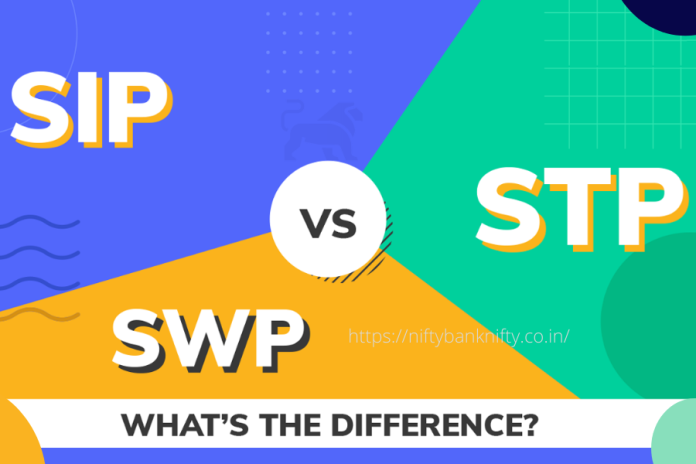For first-time mutual fund investors, three terms are confusing. They are SWP, STP and SIP. You can gain a better understanding of SIP expanded as a systematic Investment Plan here. We will get into the other two terminologies and who should invest in them here. First, SWP stands for Systematic Withdrawal Plan and STP stands for Systematic Transfer Plan. These are distinct concepts in mutual funds with their own unique benefits, uses and features.
What is SWP and How Does it Work?
SWP is a redemption plan. It permits you to withdraw a particular amount from a fund regularly. It is the opposite of SIP, where you invest systematically, while in Systematic Withdrawal Plan, you withdraw systematically.
How Does SWP (Systematic Withdrawal Plan) Work?
When you take the case of SIP, you invest small amounts periodically. It means that at the end of a later date, you will end up with a large corpus fund in SIP. On the flip side, in Systematic Withdrawal Plan, you will invest a large corpus fund initially. Thereafter, you will start redeeming a particular amount of money regularly. You can gain a better understanding from the example below:
Let us consider that you are investing Rs.5 lakhs in a debt mutual fund. You are choosing to redeem Rs.5000 every month. When you give this instruction, the fund manager will transfer this money regularly until the value of your investment gets to zero. It means that you can get regular income. This is why SWP (Systematic Withdrawal Plan) is considered the best option for retired people. They wish to invest their retirement benefit in a lump sum and get monthly income to manage their expenses.
The good thing about (SWP) Systematic Withdrawal Plan is that you have an option. Yes, you can either redeem a particular amount, a particular number of units or all returns above a particular fixed value.
What is STP and How Does it Work?
A Systematic Transfer Plan will provide you with the option to shift your investments from one mutual fund scheme to another. When you have invested in a fund house with many different schemes, this becomes possible.
How Does STP Work?
You can consider STP as another form of SIP. However, SIP involves the transfer of money from your savings bank account to a mutual fund plan at regular intervals. On the other hand, STP involves the transfer of funds from one mutual fund plan to another. With STP, you can stagger your investment over a particular term to bring down risks and stabilize returns.
For example, let us consider that you are investing systematically in equities. When you do this, you can achieve risk-free returns even with volatile conditions in the market. Here, an Asset Management Company will permit you to invest a lump sum in one fund. But, the company will provide you with the option to transfer these funds to another scheme systematically.
When you intend to initiate an Systematic Transfer Plan, you will have to select a couple of funds. The first is the fund from which you wish to transfer the money. The second fund is the one to which the funds should be transferred. Also, you will get the option to choose whether the fund transfer should happen, quarterly, monthly or yearly.
Know the Types of STP:
You will come across three types of Systematic Transfer Plans when you intend to invest. The first is fixed STP, the second is capital appreciation plan and the third option is a flexible plan. In the first type, you can transfer the same amount of money that you fix from one mutual fund to another. In the second type, you can move only the profit you earn from one fund to another fund. Thirdly, in the flexible plan, you can transfer a variable amount. However, in this kind, you will have to decide on a fixed amount that you wish to transfer. Thereafter, the excess money over the fixed amount will rely on the volatility of the market.
Systematic Transfer Plan (STP) will be the ideal choice for those with large money to invest in equities. However, they wish that the investment should happen in a phased manner. So, as against putting a lump sum in an equity fund, you have the option to invest a certain quantity in a liquid fund. This is a good option as liquid funds are known for low risk as compared to equity funds.
How About Taxation on SWPs and STPs?
In both SWP and STP, capital gains tax applies. The reason is that you transfer the money from one fund to another in Systematic Transfer Plan. So, it will be considered redemption. In the case of Systematic Withdrawal Plan, each withdrawal you make will be considered redemption. So, it attracts capital gain tax.

